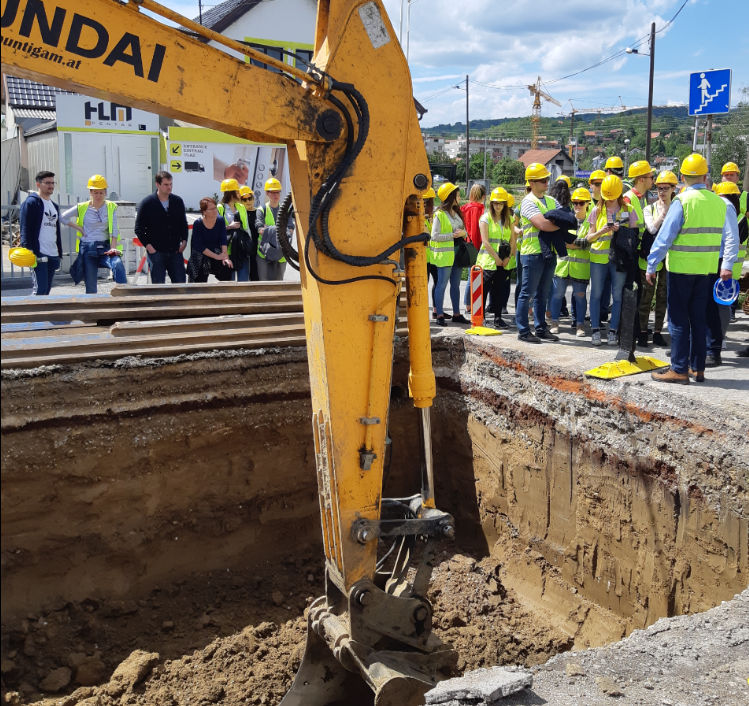Students of the Faculty of Civil Engineering on Dubravica I. and III. construction site

This year Vodoopskrba i odvodnja Ltd. within the teaching on site hosted students of the third year of the Faculty of Civil Engineering to construction site of collectors Dubravica I and III. With a tour of the construction site and expert guidance by Vodoopskrba i odvodnja Ltd., the students had a chance to get acquainted with the work of Vodoopskrba i odvodnja Ltd., a city drainage system in Zagreb, and also to hear more about the project they witnessed on the spot.
Collector Dubravica is a demanding object because it passes under the Alee Bologne, the Zagreb - Ljubljana railway line and several industrial tracks, and is built by a combination of modern microtunneling technology and a classic excavation method, totaling 997 meters in length.
Microtunneling or underground laying method of all types of pipes without the classic digging of the duct is pipe insertion by means of special machines having drill heads adapted to all types of terrain, including rocky ground, where the drilling and punching of the pipe starts from the inlet and ends in the outlet pit. The purpose of the microtunneling method is to reduce indirect construction costs such as road closure and heavy traffic, as existing objects can be overlooked during work, avoiding the closing and overrun of the streets involved.
Collector Dubravica is a demanding object because it passes under the Alee Bologne, the Zagreb - Ljubljana railway line and several industrial tracks, and is built by a combination of modern microtunneling technology and a classic excavation method, totaling 997 meters in length.
Microtunneling or underground laying method of all types of pipes without the classic digging of the duct is pipe insertion by means of special machines having drill heads adapted to all types of terrain, including rocky ground, where the drilling and punching of the pipe starts from the inlet and ends in the outlet pit. The purpose of the microtunneling method is to reduce indirect construction costs such as road closure and heavy traffic, as existing objects can be overlooked during work, avoiding the closing and overrun of the streets involved.







